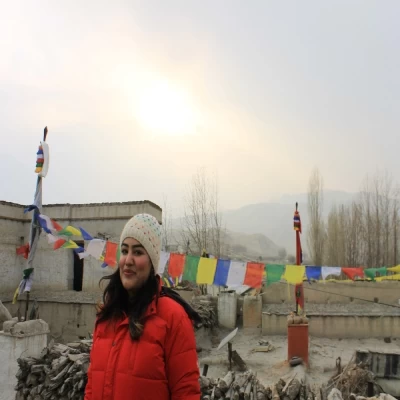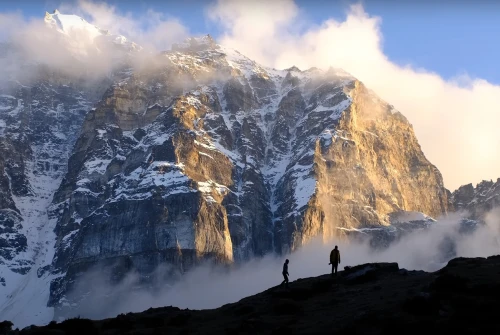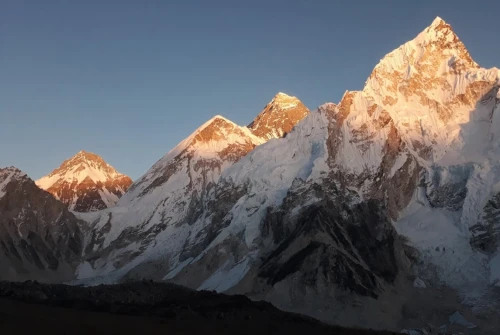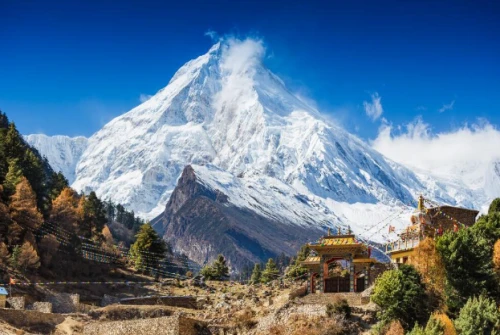The Kanchenjunga Base Camp Trek is a remote and rugged journey that promises untouched natural beauty, diverse landscapes, and authentic Himalayan culture. Named after the world’s third-highest peak, Mount Kanchenjunga (8,586m), this trek takes you into the heart of eastern Nepal far from the tourist crowds of Everest and Annapurna.
Unlike the more commercial trails, Kanchenjunga offers peace, solitude, and raw wilderness. But this trail isn't for the faint-hearted. It's long, demanding, and requires careful preparation.
Before you lace up your boots and head into the wilderness, here are some crucial things you need to know to make your Kanchenjunga Base Camp Trek in Nepal both safe and unforgettable.
Where is Kanchenjunga Base Camp Located?
Kanchenjunga Base Camp lies in the Taplejung District of eastern Nepal, bordering Sikkim (India) and the Tibet Autonomous Region of China. The region is part of the Kanchenjunga Conservation Area, which spans over 2,035 square kilometers and includes both North Base Camp (Pangpema) and South Base Camp (Oktang).
The terrain includes alpine meadows, glacial valleys, rhododendron forests, and Tibetan-style villages.
Best Time to Trek Kanchenjunga Base Cam
Timing can make or break your trek. The ideal seasons for this are:
Spring (March to May): Crystal clear skies, blooming rhododendrons, moderate temperatures. This is one of the most enjoyable times to trek in Nepal.
Autumn (September to November): Dry, stable weather with great mountain views. This is the second great time of year to trek in Nepal.
Avoid monsoon (June to August) and winter (December to February) due to landslides, heavy snowfall, and extreme cold. To know more about the best time for your trek, you can read Best Time for Kanchenjunga Trek: When to Go?
Kanchenjunga Trek Difficulty Level
This trek is rated strenuous due to:
Daily walks of 6–8 hours
High-altitude passes (over 5,000 meters)
Remote locations with limited infrastructure
Prior trekking experience and physical fitness are highly recommended. If you are going trek for the first time, this trek is not for you.
Trek Duration and Distance
Duration: 18–26 days, depending on pace and route
Distance: Approximately 200–220 kilometers
Extra days for acclimatization and weather delays are strongly advised.
Altitude and Acclimatization Tips
Key altitudes:
Pangpema (North Base Camp): 5,140 meters
Oktang (South Base Camp): 4,730 meters
To prevent Acute Mountain Sickness (AMS):
Ascend gradually
Stay hydrated
Include rest days
Carry Diamox or similar medication
Required Permits and Documentation
You’ll need:
Restricted Area Permit (RAP) for Kanchenjunga
Kanchenjunga Conservation Area Permit (KCAP)
Trekking Information Management System (TIMS) card
Permits must be processed through a registered Nepalese trekking agency, and a guide is mandatory.
Guide and Porter Requirements
Hiring a licensed guide is not just a rule, it's a lifeline. Their expertise in:
Route navigation
Local languages
First aid
can be invaluable. A porter can also reduce your load, especially on such a challenging trail.
Trekking Solo vs Group Tours
Although some seasoned trekkers might prefer solitude, solo trekking in the Kanchenjunga region is not permitted due to its remoteness and restricted zone status. You'll need to trek with at least one guide, and often with two trekkers in a group as per local regulations.
Group Trekking Benefits:
Safer in emergencies
Shared logistical costs
Better chance of getting permits approved
Social camaraderie
If you're a solo traveler, joining a group trek through an agency is the best option. To know why having a guide is important, read 10 Reasons You Should Trek Kanchenjunga Base Camp with a Guide
Cost Breakdown of the Kanchenjunga Trek
The cost can vary depending on the services and route you choose. Here's an approximate breakdown:
Expense | Estimated Cost (USD) |
Trekking permits | $30–50 |
Guide (per day) | $25–30 |
Porter (per day) | $20–25 |
Accommodation (teahouse) | $5–10/night |
Food (3 meals/day) | $15–25/day |
Transport (flights + jeep) | $350–450 |
Misc (gear, tips, snacks) | $100–150 |
Total Estimate for 18 –25 days: $1,600 to $2,200
Accommodation Options on the Trail
While the region is remote, there are teahouses and homestays available in most villages. These are often basic but clean, offering:
Wooden beds with foam mattresses
Shared toilets
Limited electricity (solar)
Blanket availability (carry your own sleeping bag)
In higher elevations like Ghunsa or Lhonak, options become more rustic.
Meals and Food Availability
Meals in teahouses are simple but nourishing.
Common Dishes Include:
Dal Bhat (rice, lentil soup, vegetables)
Tibetan bread with honey or jam
Noodles, momos, and soups
Hot tea, coffee, garlic soup (great for altitude!)
Tip: Carry energy bars, nuts, and electrolytes for quick energy.
Fitness Preparation Before the Trek
Start training at least 6–8 weeks before departure. Include:
Cardio: hiking, running, or cycling 4–5 times per week
Strength: leg and core workouts
Practice hikes: with a backpack to simulate conditions
Altitude acclimatization: if possible, hike above 3,000 locally
Altitude Sickness: Prevention and Remedies
Common symptoms of AMS include headache, nausea, loss of appetite, and dizziness. To prevent:
Hydrate regularly (3–4 liters/day)
Avoid alcohol and smoking
Ascend slowly, following the itinerary
Take acclimatization days seriously
Use Diamox if needed (consult a doctor beforehand)
Emergency evacuations are rare but possible via helicopter rescue—make sure your insurance covers it!
Mobile Network and Connectivity
Connectivity is limited in remote parts. However:
NTC (Nepal Telecom) and NCELL have patchy signals up to Ghunsa.
Wi-Fi may be available at a few teahouses (for a fee)
Carry a satellite communicator (like Garmin InReach) for emergencies
Electricity and Charging Options
Electricity is solar-powered in many villages. Teahouses may charge:
$1–3 per hour for charging phones
Outlets are limited—bring a multi-port USB charger
Pro tip: Carry a power bank (10,000–20,000 mAh) or a portable solar panel.
Cultural Etiquette and Local Traditions
The region is predominantly inhabited by Limbu, Rai, and Tibetan Buddhist communities.
Cultural Respect Tips:
Always ask before taking photos
Greet locals with “Namaste”
Avoid pointing feet at shrines
Dress modestly
Respect yak caravans and trail customs
Language Barriers and Communication Tips
English is spoken by guides, but not always by locals.
Learn These Phrases:
Namaste – Hello
Dhanyabad – Thank you
Pani chha? – Do you have water?
A simple phrasebook or language app can be helpful!
Wildlife and Natural Highlights
Kanchenjunga is home to:
Red pandas
Snow leopards (rare)
Himalayan black bears
Alpine birds and orchids
The Kanchenjunga Conservation Area is a haven for biodiversity. Always follow leave-no-trace ethics.
Travel Insurance and Emergency Protocols
Before trekking, buy insurance that includes:
High-altitude trekking up to 6,000 meters
Helicopter evacuation
Medical expenses and trip interruption
Recommended providers:
World Nomads
SafetyWing
Global Rescue
Conclusion
The Kanchenjunga Base Camp Trek is not just a trek—it’s a journey into the untouched Himalayan wilderness. With proper planning, permits, physical training, and mental preparation, this adventure can offer you lifetime memories and profound insights.
Whether it’s your first trek or your tenth, few experiences compare to the majesty and solitude of Kanchenjunga.




